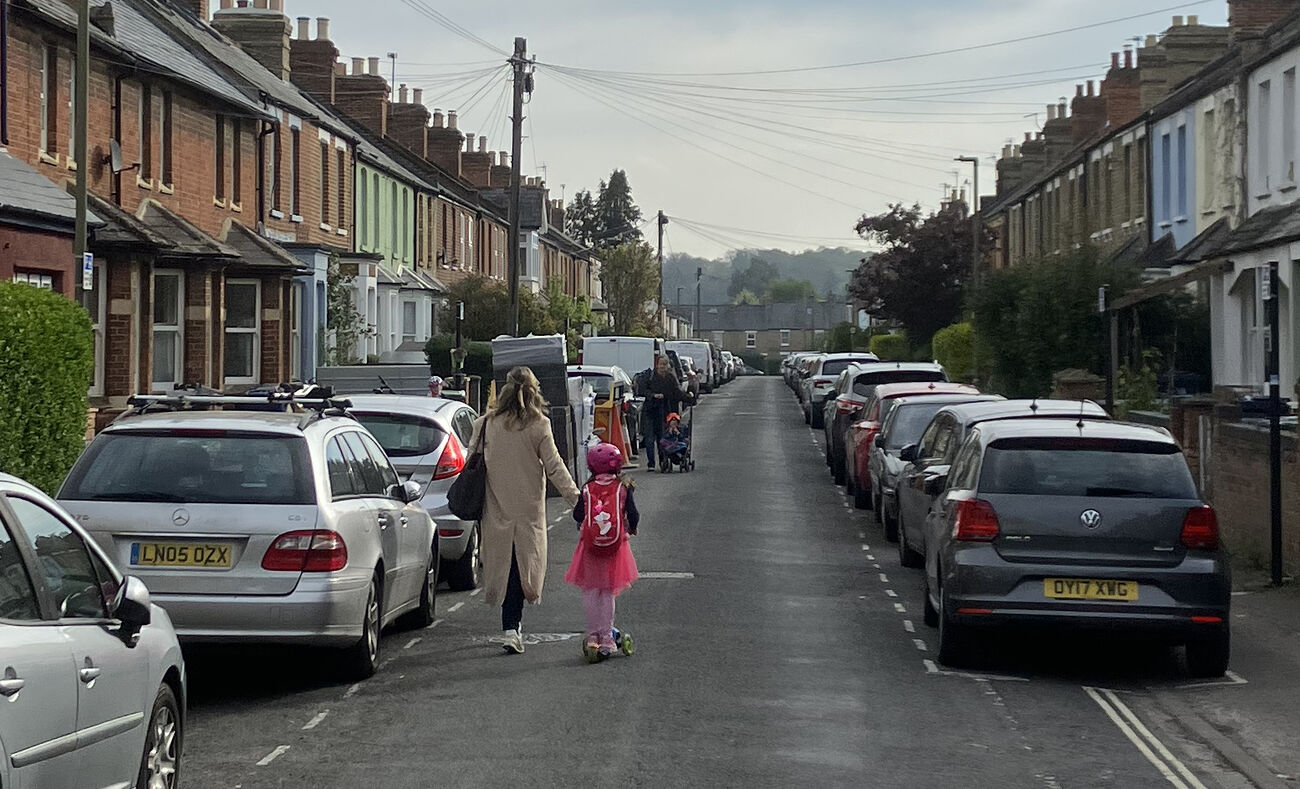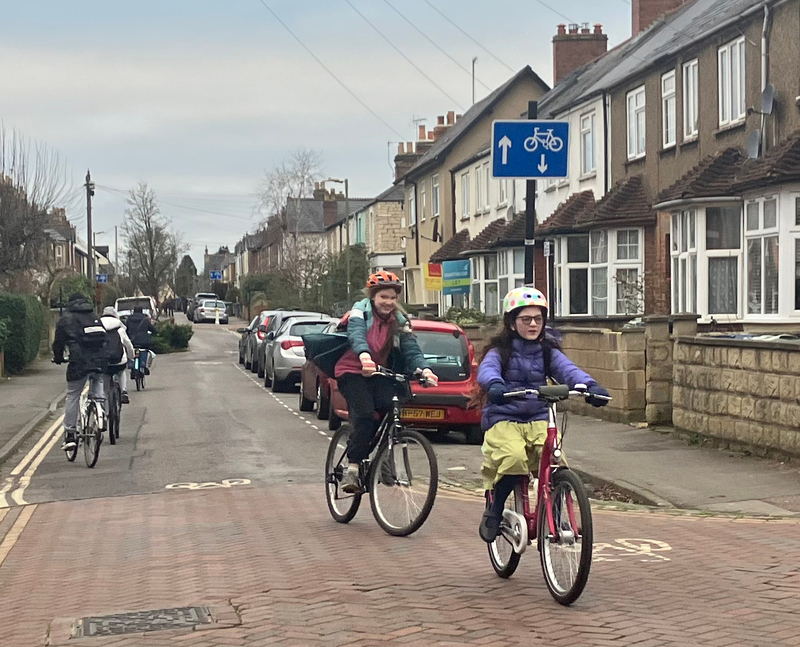No inclusive transport system for Oxford is possible without low traffic neighbourhoods. A genuinely inclusive transport system has to work for everyone. For eight year olds walking or cycling to school by themselves and for four year olds walking or cycling alongside their parents. For eighty year olds who want to be able to walk - or cycle slowly - to their local shops, their GP surgery, or their bus stops, without fear or stress. For wheelchair and mobility scooter users and for the blind and visually impaired. And for everyone else.

A white-cane user (email to cabinet, July 2022):
For my physical and mental wellbeing I like to have a walk each day. Being able to hear and trust my environment is vital to me. Removing the LTN would reduce my quality of life considerably. I do not want to become housebound as I get older and perhaps more vulnerable. I do not wish to feel nervous on my own home street.
A wheelchair user (speech to council, November 2023):
It is difficult to wheel a wheelchair on the pavement, because of all the driveways and kerbs that need to be climbed up or over. And the shape of some pavements can force my wheelchair to involuntarily veer straight into the road.
I live on the junction of two roads, which before the LTNs, used to be very busy, with often speeding cut-through traffic and the inevitable accidents.
If the LTNs are removed I would be worried, and also will be restricted in where I can go.
I have spoken to other wheel chair users as well as people with pushchairs, who all felt the same as I do.
A guide-dog owner (speech to council, November 2023):
Road safety is a matter of life and death. As LTNs reduce traffic, they improve safety for everyone, especially disabled road users like myself. My current and previous guide dog, and myself, have all been hit by scooters and cyclists on pavements, I am very glad to note fewer of both on LTN pavements. Pavement parking is a real problem if you can't see the obstacle and navigate safely around it. While this is still a problem, I notice fewer instances on LTN pavements.
As LTNs improve safety, there are more opportunities for independent, confident exercise close to home for disabled people. Air quality is significantly imroved by LTNs. Both my eyes are very sensitive to pollution and I have definitely noticed less pain and irritation with the introduction of LTNs.
LTNs improve safety and access but they are not a panacea for access issues. For example, smooth pavements, cluttered pavements, overgrown pavements, blocked dropped kerbs, and shared surfaces still need to be addressed. Public transport, which is my only option other than walking. [I'm afraid that's your two minutes, thank you very much.] Please give me more time as I have no benefit of notes and I have to remember. Thank you.
Blue badge users who require door-to-door transport must not be restricted. As you make changes to LTNs they must improve safety and access, not reintroduce or create different risks or access challenges.
Visual impairment gives me an uncommon view of LTNs. I think what we often view as a need is often a want, shaped by our culture of convenience and impatience. I grew up in a family without a car because no one in my family had sight to drive. I learned that it is entirely possible to live a very active and fulfilling life without a car - with two professional employed parents and living thirty minutes from my school, both primary and secondary.
I am in full support of keeping the LTNs and I would urge the council to make this decision very carefully, mindful of the future that we want to pass on to our children, the health that we want to give our current communities, and the safety we want to share with all road users. Please make our roads - and our communities, and our city, and our county - an environment that we can all be proud of. Thank you.
An 80 year old resident:
And with less traffic I can cross the roads 'on a diagonal' which is my 'desire line' rather than have to cross the road at a right angle.
And I can walk in the road next to my partner rather than in single file behind her on the pavement.
And some children:
It means I can walk to school without being worried about the cars coming round the corners way too fast. (12yo)
Riding my bike to school on the roads is faster and it means we can talk. (7yo)
But access and inclusion barriers can affect anyone. I was once told off by a fit thirty-something man who lived half-way up Divinity Rd and didn't care about improvements to cycling on Cowley Road or Warneford Lane because the traffic on Divinity Rd was so bad he didn't feel he could safely cycle to either from his front door.
Cramming through traffic down streets manifestly not suited for it is a dead end that goes nowhere. Congestion has been a problem in Oxford before the motor car was invented — it was bad enough that they were contemplating restrictions on Magdalen Bridge in 1975, and it was a headline problem seven years ago. Congestion needs to be addressed by tackling the underlying problem - by limiting the use of space-inefficient cars in a space-constrained city - and not by taking away from people what are often their only mobility options.
For more on this, see Nobody Left Behind: Envisioning inclusive cities in a low-car future.

